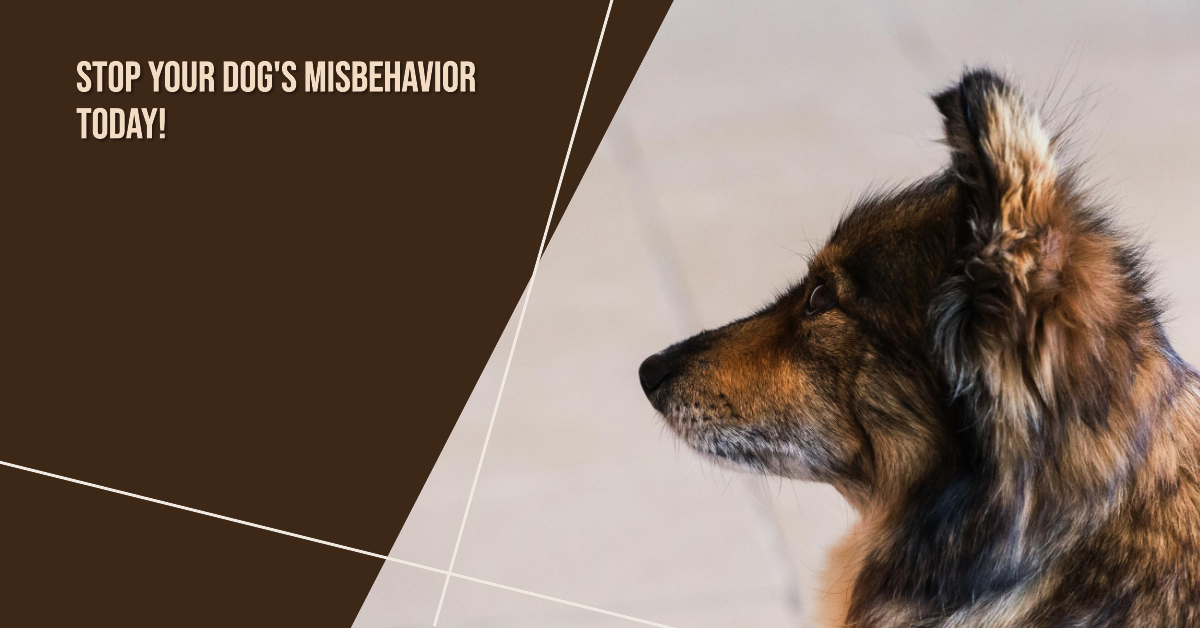Are you tired of coming home to find yet another surprise puddle on your living room floor? If you're constantly dealing with a dog who just can't seem to control their bladder in the house, don't worry – you're not alone. Many pet owners struggle with this frustrating issue. But the good news is, there are effective ways to train your furry friend to stop peeing indoors.
In this article, we'll share How To Stop A Dog For Peeing In The House and tips/ strategies to help you overcome this challenge and create a cleaner, more hygienic home for both you and your beloved four-legged companion. So say goodbye to those unwanted accidents and say hello to a well-trained and happy pup!
How To Stop A Dog For Peeing In The House
How To Stop A Dog For Peeing In The House:
- ✅ Establish a Routine
- ✅ Establish a feeding schedule
- ✅ Create a consistent bathroom schedule
- ✅ Monitor water intake
- ✅ Provide Ample Opportunities for Outdoor Bathroom Breaks
- ✅ Ensure Proper Crate Training
- ✅ Identify and Address Potential Medical Issues
- ✅ Clean and Neutralize Indoor Accidents


Establish a Routine
Establishing a routine is crucial when it comes to house training your dog. This routine includes setting up a feeding schedule, creating a consistent bathroom schedule, and monitoring your dog's water intake.
Establish a feeding schedule
By having a regular feeding schedule, you can anticipate when your dog will need to go to the bathroom. Feed your dog at the same time each day and avoid leaving food out all day. This will help regulate their digestive system and make it easier to predict when they will need to relieve themselves.
Create a consistent bathroom schedule
Take your dog outside frequently, especially after meals, playtime, and waking up from a nap. Choose a designated toilet area in your yard and consistently take your dog to that spot. This will help them associate the area with going to the bathroom and reinforce the habit.
Monitor water intake
While it's essential to keep your dog hydrated, monitoring their water intake can help prevent indoor accidents. Control water intake during specific times, such as before bedtime or when you'll be away from home for an extended period. By managing their water intake, you can better predict when they will need to go outside.
Provide Ample Opportunities for Outdoor Bathroom Breaks
To prevent indoor accidents, it's crucial to provide your dog with plenty of opportunities to go to the bathroom outside.
Take your dog outside frequently
Make it a habit to take your dog outside every few hours, depending on their age, size, and individual needs. This will ensure that they have sufficient opportunities to relieve themselves outdoors and avoid accidents indoors.
Use positive reinforcement
When your dog successfully goes to the bathroom outside, be sure to praise and reward them. Positive reinforcement, such as treats or verbal praise, will reinforce the desired behavior. This positive association will encourage your dog to continue going outside and decrease the likelihood of indoor accidents.
Ensure Proper Crate Training
Crate training can be an effective tool in house training your dog, as it helps establish boundaries and provides a safe space for them.
Choose an appropriate crate size
Selecting the right size crate is essential. The crate should be large enough for your dog to stand, turn around, and lie down comfortably. However, it shouldn't be too spacious, as this may encourage your dog to use one corner for a bathroom.
Make the crate a comfortable and inviting space
To make the crate inviting, place a comfortable bed or blanket inside. Add some familiar toys or chew items to keep your dog occupied. It's important to create a positive association with the crate, making it a place your dog wants to spend time in.
Gradually increase crate time
Start by leaving your dog in the crate for short periods, gradually increasing the duration over time. This helps your dog adjust to being alone and prevents them from having accidents while unsupervised. However, avoid leaving your dog in the crate for too long, as this can lead to anxiety and discomfort.
Identify and Address Potential Medical Issues
If your dog is consistently having accidents indoors, it's essential to rule out any underlying medical issues that may be causing this behavior.
Consult with a veterinarian
Schedule a visit with your veterinarian to discuss your dog's house training difficulties. They can perform a thorough examination and determine if there are any medical reasons for the behavior.
Rule out urinary tract infections or other health problems
Urinary tract infections or other health issues can cause dogs to have frequent accidents indoors. Your veterinarian can perform tests and rule out any medical conditions that may be contributing to the problem.
Consider necessary treatments
If your dog is diagnosed with a medical condition, follow your veterinarian's recommendations for treatment. Treating the underlying issue can help resolve the house training problems.
Clean and Neutralize Indoor Accidents
Accidents are bound to happen during the house training process, but it's essential to clean them up promptly and effectively to prevent future accidents in the same spot.
Act immediately to clean up accidents
When you discover an indoor accident, act quickly to clean it up. The longer the urine or feces sits, the more likely your dog will associate that area with a bathroom.
Use an enzymatic cleaner
Regular household cleaners may not effectively remove the scent of urine, which can attract your dog back to the same spot. Instead, use an enzymatic cleaner specifically designed to break down the odor-causing molecules. This will help eliminate the smell and discourage your dog from using the area again.
Avoid using ammonia-based cleaners
Ammonia has a similar scent to urine, and using ammonia-based cleaners may actually encourage your dog to use that area as a bathroom. Stick to enzymatic cleaners or products specifically formulated for pet messes.
Avoid Punishment
Punishing your dog for indoor accidents is not an effective way to house train them. It can create fear and anxiety, making the house training process more challenging.
Do not scold or punish your dog for indoor accidents
Yelling at or physically punishing your dog for having accidents will only confuse and scare them. It may also damage the bond you have with your furry friend. Instead, focus on positive reinforcement and redirection.
Focus on positive reinforcement
When your dog goes to the bathroom outside, reward them with praise, treats, or a favorite toy. Positive reinforcement helps reinforce the desired behavior and encourages your dog to continue going outside.
Redirect inappropriate behavior
If you catch your dog in the act of having an accident indoors, gently interrupt them and bring them outside to their designated toilet area. Be patient and consistent with redirecting them, and avoid any negative reactions. Remember, positive reinforcement is key to successful house training.
Introduce House Training Techniques
In addition to establishing a routine and using positive reinforcement, there are specific techniques that can aid in house training your dog.
Use crate training as part of house training
Crate training is an effective technique that helps prevent accidents and teaches your dog to hold their bladder and bowels. Incorporate crate training into your house training routine to establish boundaries and prevent indoor accidents.
Regularly take your dog to the designated toilet area
Consistency is key when house training your dog. Take them to the designated toilet area frequently, especially after meals, playtime, or waking up from a nap. Encourage them to do their business in the right spot and reward them when they do.
Reward desired behavior
When your dog successfully goes to the bathroom outside, reward them with positive reinforcement. This could be treats, praise, or a combination of both. Over time, your dog will associate going to the bathroom outside with the rewards, making the behavior more likely to be repeated.
Reduce Anxiety and Stress
Anxiety and stress can contribute to house training difficulties. Creating a calm and safe environment can help alleviate these issues and improve the success of your house training efforts.
Create a calm and safe environment
Ensure that your dog has a designated space where they can relax and feel secure. Provide them with a cozy bed, soothing music, or a comfort item to help reduce anxiety. Minimize loud noises or sudden disruptions that can startle your dog and cause accidents.
Consider providing anxiety relief products or medication
In some cases, dogs may benefit from anxiety relief products or medication. Consult with your veterinarian to determine if these options are suitable for your dog's specific needs. Professional guidance can help you find the right products or medications to alleviate anxiety and improve house training.
Implement separation anxiety training techniques
Separation anxiety can lead to indoor accidents due to the stress and panic your dog experiences when left alone. Implementing separation anxiety training techniques, such as gradually increasing the time apart, can help your dog feel more comfortable and reduce accidents.
Manage Access to Water
Controlling your dog's access to water can help manage their bathroom needs and minimize accidents.
Control water intake during specific times
If you notice your dog drinking excessive amounts of water at certain times, try to control their intake during those periods. For example, if your dog tends to drink a lot before bedtime, you can limit their access to water an hour or two before bedtime to decrease the likelihood of nighttime accidents.
Limit access to water before bedtime
To prevent accidents during the night, avoid leaving water bowls accessible overnight. Instead, provide water during specific times of the day and remove the bowl before bedtime. This way, your dog's bladder will be empty, reducing the chance of accidents while you sleep.
Consider water intake based on specific circumstances
Depending on your dog's age, size, and overall health, you may need to adjust their water intake. For example, if you plan to be away from home for an extended period, consider limiting their water intake beforehand to minimize accidents in your absence.
Seek Professional Help if Necessary
If you've tried various techniques and are still struggling with house training, don't hesitate to seek professional help.
Consult a professional dog trainer or behaviorist
A professional dog trainer or behaviorist can provide expert guidance tailored to your specific case. They can assess the underlying reasons for your dog's indoor accidents and provide a customized training program.
Receive expert guidance for your specific case
Every dog is different, and what works for one may not work for another. By consulting with a professional, you can receive personalized advice and strategies that address your dog's unique needs and challenges.
Implement specialized training programs
Professional dog trainers and behaviorists can offer specialized training programs that target specific issues or behaviors. These programs can provide you with the tools and techniques necessary to successfully house train your dog and overcome any obstacles you may be facing.
By following the steps outlined in this comprehensive article, you can successfully stop your dog from peeing in the house. With patience, consistency, and positive reinforcement, you can establish good bathroom habits and create a harmonious living environment for both you and your furry friend. Remember, house training takes time, so be patient and understanding as you work towards this common goal.





